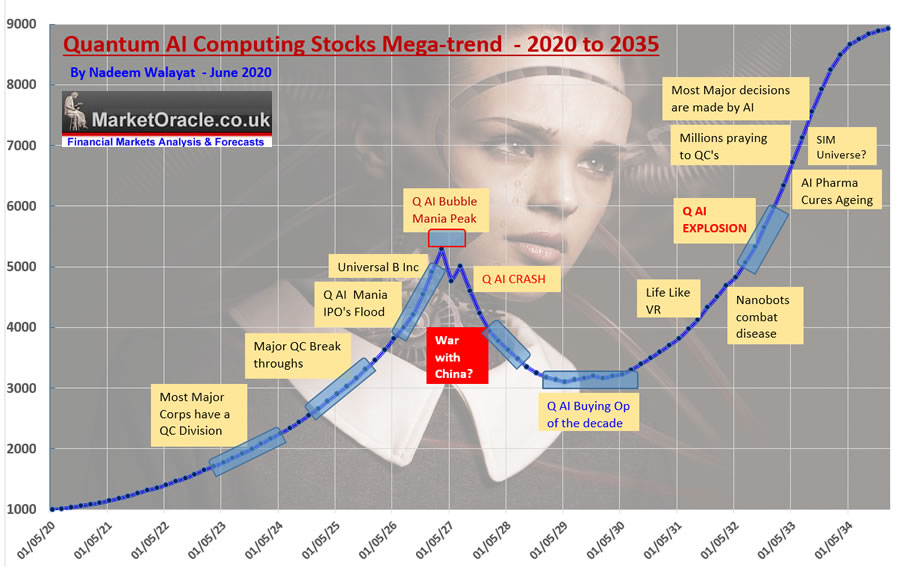20 Top Reasons For Picking Stock Analysis Websites Websites
20 Top Reasons For Picking Stock Analysis Websites Websites
Blog Article
Top 10 Tips To Assess The Market Coverage Offered By Ai Trading Platforms That Predict/Analyze Stocks.
The coverage of markets on trading platforms that use AI stock prediction/analysis is critical as it determines the markets and assets you have access to. A platform that offers comprehensive market coverage allows you to diversify your portfolios, explore global trading opportunities and adapt to different strategies. These are the top 10 ways to evaluate the market coverage offered by these platforms.
1. Evaluate Supported Asset Classes
Stocks: Ensure your platform supports major stock exchanges like NYSE, NASDAQ LSE and HKEX, and that it includes small, mid and large cap stocks.
ETFs: Check if the platform can support a broad variety of ETFs that offer a wide exposure to different regions, sectors, or even themes.
Futures and options. Verify that the platform has derivatives such as futures, options and other instruments that leverage.
Commodities and forex: Check whether your website offers Forex and commodities, precious metals, and energy commodities.
Cryptocurrencies: Check if the platform is compatible with major copyright (e.g., Bitcoin, Ethereum) and altcoins.
2. Check coverage in the geographic area.
Global markets - Make sure that the platform is able to provide coverage of every major market around the globe, including North America (including copyright), Europe, Asia-Pacific markets as well as emerging ones.
Regional focus: Check whether your platform has a specific market or market that matches with your trading requirements.
Local exchanges - Check for local or regional exchanges that relate to your location and your strategy.
3. Compare real-time data with delayed Data Delayed data
The availability of real-time data is crucial for quick decision making especially in trading that is active.
Delayed Data: Check whether the data that is delayed can be obtained at no cost or at the cost of. These may be sufficient for long term investors.
Latency of data. Check to see how your platform can reduce the latency of real-time data feeds.
4. Review the Historical Data available
The depth of the historical data If the platform is available, ensure that it has vast historical data (e.g. 10, 10+ years) for backtesting and analysis.
Granularity: Find out if the data contains intraday, daily weekly, monthly, and daily level of granularity.
Corporate actions: Find out if the historical data includes stock splits and dividends.
5. Find out the market's depths and place an order for books
Data Level 2: Ensure the platform offers Level 2 (order book depth), for better price discovery.
Be sure to check for live bidding and spreads of asking. This will ensure that pricing is accurate.
Volume data: Make sure the platform provides detailed information on volume for analysing liquidity and market activities.
6. Review the extent of coverage for Indices and Sectors
Major indices : Ensure that you are using a platform that includes the main indices. (e.g. S&P 500, NASDAQ 100, FTSE 100 ) This is important to benchmark your strategy and also for index-based strategy.
Specific data for a specific sector for targeted analysis make sure the platform has information on a specific sector (e.g. technology, healthcare or energy).
Custom indexes: Check whether the platform supports the creation of or tracking of custom indices based on your requirements.
7. Integrate News and Sentiment Data
News feeds: Make sure the platform integrates live news feeds of reputable sources (e.g., Bloomberg, Reuters) for events that affect the market.
Sentiment analysis: See if there are tools for sentiment analysis based off of social media posts, news articles or other data sources.
Event-driven strategy: Make sure that the platform supports the use of event-driven trading strategies (e.g. announcements of earnings, economic reports).
8. Verify Multimarket Trading Capabilities
Cross-market trade: Make sure the platform supports trading across different markets and asset categories using a common interface.
Currency conversion: Make sure that the platform allows multi-currency accounts as well as automated currency conversion for international trading.
Verify that you are in compliance with time zones.
9. Assess Coverage of Alternative Data Sources
Alternate data sources: To get unique insights, verify if the platform is able to incorporate other data sources.
ESG data. Find out if the platform is stocked with environmental, socio-economic, and governance information for socially responsible investing.
Macroeconomic data: Make sure that the platform has macroeconomic information (e.g. GDP, inflation) to perform fundamental analysis.
10. Review User Feedback and Market Reputation
User feedback is a great way to evaluate the market coverage of a platform.
Check for the platform's industry reputation. This includes awards and acknowledgement from experts in the industry.
Case studies: Search for cases studies or testimonials that highlight the effectiveness of the platform in particular markets or asset classes.
Bonus Tips
Trial period for free: Try the coverage in the marketplace of the platform as well as the quality of its data with the demo or trial for free.
API access: Ensure that the API is available on the platform that allows you to programmatically access market data for custom analysis.
Customer Support: Make sure that the platform is able to provide support for any data-related or market-related issues.
With these suggestions to evaluate the market coverage of AI platform for predicting and analyzing stocks and ensure that you select one that has access to the market and the information you need for a successful trading. A comprehensive market coverage allows you to diversify and explore your portfolio. It also allows you to adjust to changes in the market. View the best ai for investing recommendations for blog info including ai copyright trading bot, stock ai, invest ai, copyright financial advisor, invest ai, incite ai, ai trading, best stock analysis website, ai investment platform, trading chart ai and more.
Top 10 Tips For Evaluating The Speed And Latency Of Ai Trading Platforms
When looking at AI trading platforms which forecast or analyze price movements the speed and latency of processing are key factors, particularly for high-frequency and algorithmic traders. Milliseconds delay could have a negative impact on trade execution. Here are 10 top tips for measuring the speed of the platform.
1. Data feeds that are real-time: How do you evaluate them
Speed of data delivery - Make sure that the platform will provide real-time data with a minimum delay (e.g. a sub-millisecond latency).
Data source proximity: To reduce the time needed to transfer data, make sure whether your server's servers are able to be found near exchanges that are major.
Data compression: Check if the platform is using effective data compression in order to speed up data delivery.
2. Test the speed of trade execution
Processing orders: The platform's capability to complete and process trades quickly once an order has been submitted.
Direct market access: Ensure that the platform allows direct orders to be sent to the exchange.
Examine the execution reports to see if they include timestamps of order confirmation, fill, and submission.
3. Review the responsiveness of the Platform
Speed of the user interface (UI) Find out the speed at which your platform's user interface responds to your inputs.
Updates to charts Check to see if the charts and visualizations are updated in real time with no lag.
Performance of mobile applications: When using a mobile app, ensure that it runs as fast as the desktop version.
4. Check for Low-Latency infrastructure
Server Locations: Use servers that have low latency and are near major financial centers or exchanges.
Find co-location options. These services permit you to place your algorithms near to the exchange.
High-speed networks: Verify if the platform uses high-speed fiber-optic networks or other low-latency technologies.
5. Assessing the speed of simulation and backtesting
Find out how quickly the platform analyzes and processes the historical data.
Simulation latency: Verify that the software can simulate trading in real time without any noticeable delays.
Parallel processing: Determine if the platform utilizes parallel processing or distributed computation to speed up calculations.
6. Estimate API Latency
API response time The API response time is the rate at that an API platform responds to requests.
Rate limits: Determine if the API has adequate rate limits to prevent delays in high-frequency trading.
WebSockets Support: Confirm that the platform utilizes WebSockets protocols for low-latency real-time streaming of data.
7. Test Platform Stability with Load
Trading scenarios with high volume Check the stability of the platform and its ability to respond by simulated trading scenarios.
Test your platform in periods of market volatility.
Check to see whether there are any tools available for testing strategies for extreme circumstances.
8. Evaluate Network and Connectivity
Internet speed demands. Ensure that your internet connection has the recommended speeds for the platform to ensure the best performance.
Connections that are redundant: Make sure you know whether your platform has redundant internet connections. This will allow you to keep your system from experiencing interruptions.
VPN latency: If you use a VPN, verify whether it has a significant amount of latency, and if the service provides alternatives.
9. Check for Speed Optimisation Features
Pre-trade Analyses: Check whether the platform offers the pre-trade analysis in order to maximize the speed of execution and processing orders.
Smart order routing (SOR): Verify if the platform uses SOR to identify the fastest and most cost-effective execution venues.
Monitoring latency: Find out whether your platform is equipped with tools that allow you to examine and monitor latency in real-time.
User Feedback and Review Benchmarks
Reviews from users: Perform user research to evaluate the platform's latency and speed.
Benchmarks provided by third parties: Look for independent benchmarks and reviews which evaluate the platform's performance to those of its competitors.
Case studies: Check if the platform provides case studies or testimonials highlighting its low-latency capabilities.
Bonus Tips
Trial period: Try an unpaid trial or demo to test the platform's speed and latency in actual scenarios.
Customer Support: Make sure whether the platform offers assistance for problems related to latency or optimize.
Hardware requirements: Check if you need specific equipment to achieve the highest performance (e.g. high-performance PCs).
With these suggestions, it is possible to accurately assess the speed, latency and precision of AI software for analyzing and predicting stocks. This allows you to choose a platform based on your trading requirements as well as reducing any possible delays. Low latency trading platforms are vital for traders who use high-frequency algorithms. small delays could negatively impact their profits. Take a look at the top rated copyright ai trading bot for site info including ai invest, stocks ai, trading chart ai, ai stock market, best artificial intelligence stocks, ai hedge fund outperforms market, trading with ai, ai trading platform, ai for trading, ai stock trading app and more.